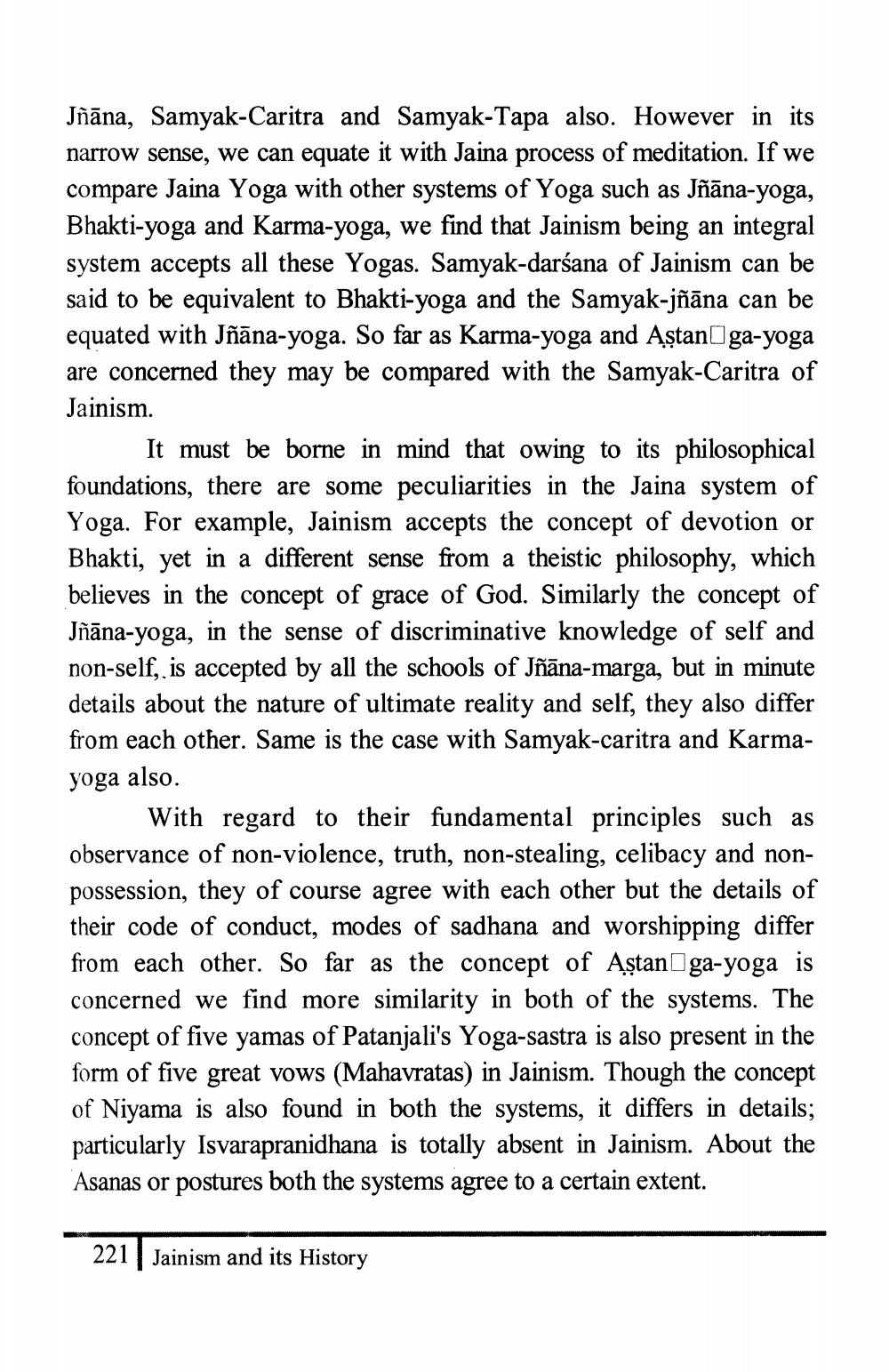________________
Jñāna, Samyak-Caritra and Samyak-Tapa also. However in its narrow sense, we can equate it with Jaina process of meditation. If we compare Jaina Yoga with other systems of Yoga such as Jñāna-yoga, Bhakti-yoga and Karma-yoga, we find that Jainism being an integral system accepts all these Yogas. Samyak-darśana of Jainism can be said to be equivalent to Bhakti-yoga and the Samyak-jñāna can be equated with Jñāna-yoga. So far as Karma-yoga and Aştanga-yoga are concerned they may be compared with the Samyak-Caritra of Jainism.
It must be borne in mind that owing to its philosophical foundations, there are some peculiarities in the Jaina system of Yoga. For example, Jainism accepts the concept of devotion or Bhakti, yet in a different sense from a theistic philosophy, which believes in the concept of grace of God. Similarly the concept of Jñāna-yoga, in the sense of discriminative knowledge of self and non-self, is accepted by all the schools of Jñāna-marga, but in minute details about the nature of ultimate reality and self, they also differ from each other. Same is the case with Samyak-caritra and Karmayoga also.
With regard to their fundamental principles such as observance of non-violence, truth, non-stealing, celibacy and nonpossession, they of course agree with each other but the details of their code of conduct, modes of sadhana and worshipping differ from each other. So far as the concept of Astanga-yoga is concerned we find more similarity in both of the systems. The concept of five yamas of Patanjali's Yoga-sastra is also present in the form of five great vows (Mahavratas) in Jainism. Though the concept of Niyama is also found in both the systems, it differs in details; particularly Isvarapranidhana is totally absent in Jainism. About the Asanas or postures both the systems agree to a certain extent.
221 | Jainism and its History




